There is nobody else driving here.
I do find a little knot of trucks sitting haphazardly in the middle of the road. A van. A red pickup with guys sitting in the back drinking beer. They are watching the monolith fall. A crane and a little work crew are battering the half-demolished concrete mountain again and again. They were here yesterday too - the crews and the crowd both. They don't seem to be making much progress.
You'd never know you were in America's third largest city. This is a wasteland - a ruin. People are surprised to learn that the population density of Chicago is actually less than that of Los Angeles - LA is more suburban-looking, but doesn't contain the vast stretches of postindustrial emptiness and ruin. The first time, they tore this neighborhood down to build the monoliths, to cantain the black population and prevent its westward spread. It didn't work. The white population fled beyond the city to points west - and middle class blacks followed. After the riots of 1968, the population plummeted as everyone who could leave trickled out. House after house was demolished, whole blocks gone or with a few buildings left, standing irregularly, little clumps huddling against the cold and emptiness, separated by stretches of weeds and crumbling asphalt. Trees have grown up where homes once stood.
Beyond the crumbling projects, I can see new luxury condos going up. It seems pretty naive - the condos are buing build at city density, but ther eare so few of them, new clumps on the new prarie. If they put housing up on all these abandoned blocks, who will live there? The Census Bureau believes the city population is falling again. There are no grocery stores here, no bars, nothing but churches, liquor stores, beauty salons. The locationis great, we're right on the highway, close to the Loop, close to the Green Line. But nobody wants these neighbors.
Part of me thinks nothing could bring middle class whites to the West Side in large numbers (short of full scale ethnic cleansing). The reality is, they flee further and further from anyone unlike themselves. The reality is, the city has lost a quarter of its population since 1950. At this point, the entire Chicago region is losing population to outmigration.
What was once the nation's liveliest metropolis has been slowly transforming itslef to one type of wasteland or another. Postindustrial sludge. Sprawling subdivided suburbia. Ghost town neighborhoods of the South and West sides. The rubble where the projects once stood.
Somewhere in Tim Samuelson and Camilo Jose Vergara's Unexpected Chicagoland is the line:
It's the breakdown of social relationships, not of bricks and mortar, that turns neighborhoods into ruins.I reread the bulk of it and can't find it, but I know it's in there somewhere. And I know it's true. Hate is killing Chicago. Hate and fear. It ain't murder, it's a slow suicide attempt.
True, she's coming back. She's out of the ICU and eating solid food. But half of Chicago is still Detroit. In fact most of our major cities are dying slowly, neglected - New Orleans was being destroyed day be day long before the hurricane hit . . .
Anyway, I took pictures.
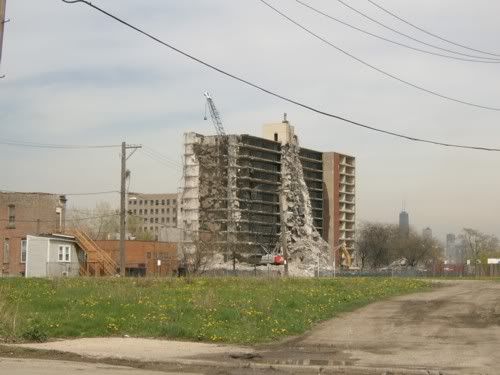
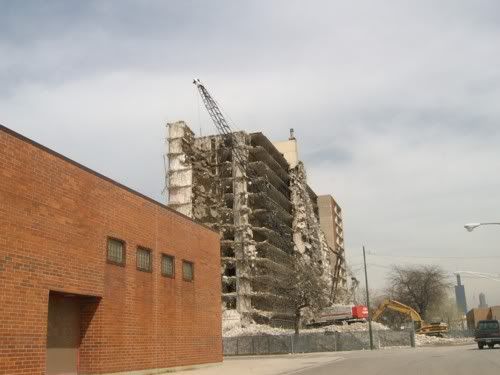
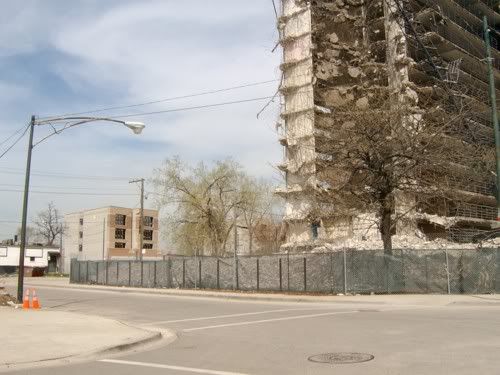
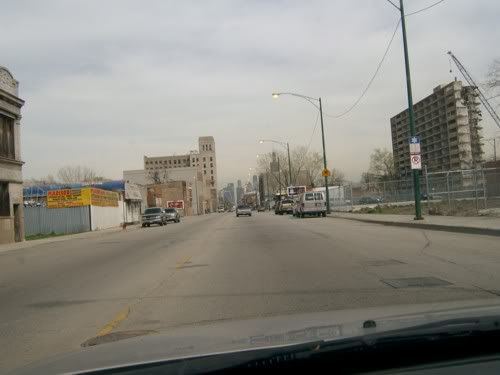

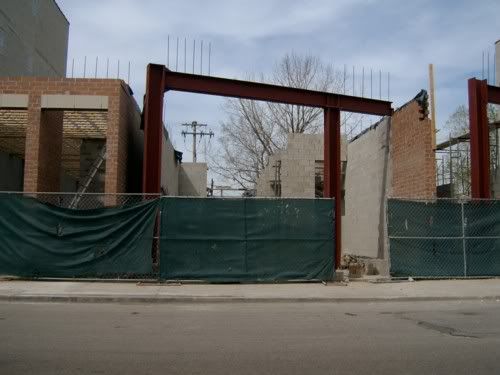
2 comments:
I remember the same line in Unexpected Chicagoland - excellent book and fitting social statement. When I ride the Green line or Red line and see so much vacant space, I wonder if these blanks will be filled in another 10 years, and who will be there.
Perhaps it is a vain hope that more neighborhoods will be integrated like Rogers Park by that time. The odds seems to be against it, but I don't want to give up that hope.
I share that hope, but I'm not sure if it's possible. Some areas are certainly a lot more diverse than they used to be, but typically integration is just a point in time while a neighborhood was in transition. Over time there have been quite a few "integrated" neighborhoods in Chicago with mixed black and white populations - typically that has meant that the white population was in the process of moving out and the black population was moving in. Now most of these areas are either 99% black or they are already transitioning again, either because of Latino immigration or because of "gentrification." So it remains to be seen whether todays mixed neighorhoods remain integrated, or whether they will be some kind of monoculture again in 15 years.
Rogers Park is sort of a special case, since it includes the most diverse ZIP code in the country, and has for some time. Typically such stable yet diverse neighorhoods contain some unusual features, like a university which attracts middle class employees and residents, alongside an abundance of relatively cheap housing. Also, typically, they function by allowing only a certain number of lower class residents to live there, while making sure the cheap housing stock is not expanded to permit more of them. I'm not sure how true this is of Rogers Park, since I haven't spent all that much time there. But the organizations I've worked with there are often only a few blocks apart but serving completely different populations. So it almost seems to me like several different communities sharing a relatively compact physical space. Which is interesting, but I'm not sure it's a model that would work in the rest of the city.
Post a Comment